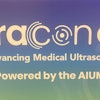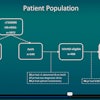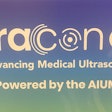To lower the risk of incorrectly diagnosing a pregnancy as nonviable, more-stringent criteria for ultrasound scans should be used to determine if a first-trimester pregnancy cannot result in a live-born baby, advised a multispecialty panel in an article published October 10 in the New England Journal of Medicine.
Convened by the Society of Radiologists in Ultrasound (SRU), the 15-member panel included representatives from radiology, obstetrics/gynecology, and emergency medicine. It recommended a number of changes, including new standards for nonviability based on the size of an embryo without a heartbeat and the size of a gestational sac without an embryo.
Until recently, a pregnancy was diagnosed as nonviable if ultrasound showed an embryo measuring at least 5 mm without a heartbeat; however, the new standards ask clinicians to wait until the embryo is at least 7 mm before ruling on viability. Furthermore, the standard for nonviability based on the size of a gestational sac without an embryo should be increased from 16 mm to 25 mm, according to the team led by Dr. Peter Doubilet, PhD, of Brigham and Women's Hospital and Harvard Medical School (NEJM, October 10, 2013, Vol. 369:15, pp. 1443-1451).
In addition, the authors emphasized that the commonly used "discrimination level" of the pregnancy blood test is not reliable for excluding a viable pregnancy. They also cautioned physicians against taking any action that could damage an intrauterine pregnancy based on a single blood test, if the ultrasound findings are inconclusive and the woman is in stable condition.
"The guidelines presented here, if promulgated widely to practitioners in the various specialties involved in the diagnosis and management of problems in early pregnancy, would improve patient care and reduce the risk of inadvertent harm to potentially normal pregnancies," the authors wrote.
Not stringent enough
Research over the past two to three years has shown that previously accepted criteria for ruling out a viable pregnancy are not stringent enough to avoid false-positive results, but it has been difficult both to disseminate this information to practitioners and to implement standardized protocols.
The challenge is that physicians from multiple specialties -- including radiology, obstetrics and gynecology, emergency medicine, and family medicine -- are involved in the diagnosis and management of early-pregnancy complications, according to the authors.
"As a result, there is a patchwork of conflicting, often outdated published recommendations and guidelines from professional societies," they wrote.
To address the problem, SRU in October 2012 organized the Multispecialty Consensus Conference on Early First Trimester Diagnosis of Miscarriage and Exclusion of a Viable Intrauterine Pregnancy. At the conference, researchers reviewed the diagnosis of nonviability in early intrauterine pregnancy of uncertain viability and, separately, in early pregnancy of unknown location. They focused mainly on the initial or only ultrasound study performed during the pregnancy.
The conference participants developed the following guidelines for transvaginal ultrasound diagnosis of pregnancy failure in a woman with an intrauterine pregnancy of uncertain viability.
Findings diagnostic of pregnancy failure:
- Crown-rump length of ≥ 7 mm and no heartbeat
- Mean sac diameter of ≥ 25 mm and no embryo
- Absence of embryo with heartbeat ≥ 2 weeks after a scan that showed a gestational sac without a yolk sac
- Absence of embryo with heartbeat ≥ 11 days after a scan that showed a gestational sac with a yolk sac
Findings suspicious for but not diagnostic of pregnancy failure:
- Crown-rump length of < 7 mm and no heartbeat
- Mean sac diameter of 16-24 mm and no embryo
- Absence of embryo with heartbeat 7-13 days after a scan that showed a gestational sac without a yolk sac
- Absence of embryo with heartbeat 7-10 days after a scan that showed a gestational sac with a yolk sac
- Absence of embryo ≥ 6 weeks after last menstrual period
- Empty amnion (amnion seen adjacent to yolk sac, with no visible embryo)
- Enlarged yolk sac (> 7 mm)
- Small gestational sac in relation to the size of the embryo (< 5 mm difference between mean sac diameter and crown-rump length)
Pregnancy of unknown location
The panel also determined diagnostic and management guidelines related to the possibility of a viable intrauterine pregnancy in a woman with a pregnancy of unknown location.
For the finding of no intrauterine fluid collection and normal (or near-normal) adnexa on ultrasonography, the authors provided the following key points:
- A single measurement of human chorionic gonadotropin (hCG), regardless of its value, does not reliably distinguish between ectopic and intrauterine pregnancy (viable or nonviable).
- If a single hCG measurement is < 3,000 mIU/mL, presumptive treatment for ectopic pregnancy with the use of methotrexate or other pharmacologic or surgical means should not be undertaken, in order to avoid the risk of interrupting a viable intrauterine pregnancy.
- If a single hCG measurement is ≥ 3,000 mIU/mL, a viable intrauterine pregnancy is possible but unlikely. The most likely diagnosis is a nonviable intrauterine pregnancy, so it is generally appropriate to obtain at least one follow-up hCG measurement and follow-up ultrasonogram before undertaking treatment for ectopic pregnancy.
If ultrasound had not yet been performed, the researchers offered the following key point: "The hCG levels in women with ectopic pregnancies are highly variable, often < 1,000 mIU/mL, and the hCG level does not predict the likelihood of ectopic pregnancy rupture," they wrote. "Thus, when the clinical findings are suspicious for ectopic pregnancy, transvaginal ultrasonography is indicated even when the hCG level is low."
Panel member Dr. Kurt Barnhart, an ob/gyn at Perelman School of Medicine at the University of Pennsylvania, said in a statement that the guidelines represent a consensus that will balance the use of ultrasound and the time needed to ensure that an early pregnancy is not falsely diagnosed as nonviable.
"There should be no rush to diagnose a miscarriage; more time and more information will improve accuracy and hopefully eliminate misdiagnosis," he said in the statement.



















